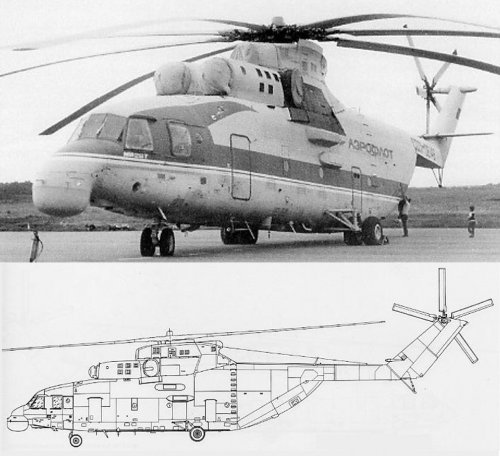From 'Red Star' 22, 'Mil's Heavylift Helicopters', pp. 85-6 :-
"Mi-26NEF-M ASW helicopter
In 1990 a production Mi-26 (CCCP-06146. c/n 34001212317} was converted into the prototype of the Mi-26NEF-M shore-based ASW helicopter equipped with a dunking sonar. Nef (Russian for 'nave‘) was probably the name of the mission equipment suite. The machines main external distinguishing feature was the curiously drooping ‘tapir snout‘ housing a 360' search radar instead of the usual weather radar. A towed magnetic anomaly detector (MAD) 'bird' was located under the non-functional rear clarnshell doors also. two bulges over as-yet unidentified equipment were positioned on the fuselage sides above the chaff/flare dispensers.
Apparently the mission equipment was developed by the Leningrad-based LNPO Leninets (Leninist), which was one of the Soviet Union's leading avionics houses. (LNPO = Leningrahdskoye naoochno-proizvod'stvennoye obyedinenrye — Leningrad Scientific & Production Association. It is now known as the Leninets Holding Company.)
The work did not proceed beyond the experimental stage. On 18th August 1991 the Mi-26N EF-M was unveiled to the public at the open doors day at Pushkin near St. Petersburg, LNPO Leninets's Flight test facility, during the annual Aviation Day air fest.
Later the helicopter was fully reconverted to standard configuration, serving with lhe New Zealand based airline Heli Harvest as RA-06146."
cheers,
Robin.

